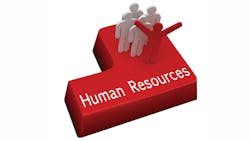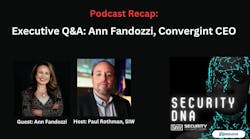Like many other areas of life and business, human resources has a unique lifecycle; however, instead of focusing on the biological aspects of development, the HR lifecycle involves the stages employees go through and the role HR takes on during those stages.
The typical employee experiences five different stages during their employment: Recruitment, education, motivation, evaluation and celebration. Each stage has its own challenges, opportunities and benefits. For example, if your small business is experiencing excessive employee turnover, it is likely that the “motivation” stage of the HR lifecycle needs attention; or, if an employee’s skills are not improving, you will want to address the “evaluation” stage.
If there is a breakdown at any stage of the cycle, you need to take the necessary steps to correct the problem so both your employees and your business continue to grow. Here’s a look at each stage in more depth:
Stage 1: Recruitment
Growing your business starts with hiring the right people. Hiring decisions play a critical role in turnover, productivity and growth. In order to succeed in the recruitment phase of the HR lifecycle, your human resources department needs to:
- Create a strategic staffing plan that includes understanding positions that need to be filled, what will be expected of an employee, a strategy for attracting the best of the best, and other hiring concerns;
- Analyze compensation and benefits packages to see if they’re competitive enough to attract the top talent; and
- Develop an interviewing protocol, which may include written tests and multiple interview requirements, as well as a focus on active listening.
Stage 2: Education
Begin the education process from the moment employees start in their new position. They should know their role in the company, your expectations, and their responsibilities. During this phase of the human resources lifecycle, it’s important for HR to:
- Communicate your company’s culture and values;
- Train new hires until they fully understand their job’s duties and responsibilities;
- Assign a coworker to new employees to support their transition and help them feel more connected with your company; and
- Introduce new employees to the rest of your staff, and make sure they have everything they need to get started (including passwords, voicemail, parking passes, etc.).
Stage 3: Motivation
Turnover is highest in the first 90 days, which is often due to a lack of motivation. Leaders who focus on building bonds with employees in the first 90 days retain employees longer than those who do not. HR can effectively motivate new hires by:
- Keeping them engaged, performing at a higher level, and showing commitment to your company;
- Offering reasons to stay motivated, such as better compensation, benefits, and opportunities for growth;
- Providing recognition to employees who perform at a high level; and
- Appreciating their contribution to help make your business more successful.
Stage 4: Evaluation
In this stage of the human resources lifecycle, a supervisor evaluates and measures an employee’s performance. It gives leaders and the employee specific metrics and helps determine if he or she is the right fit for the job. Focus on the following:
- Challenge, support, and evaluate employees while offering constructive feedback on a regular basis (not just at evaluation time);
- Conduct performance reviews based on facts, not on feelings;
- Spend more of your time discovering employees doing a good job rather than constantly criticizing; and
- Offer training and professional development to help employees reach their goals and move further ahead in your company.
Stage 5: Celebration
The fifth stage of the HR lifecycle gives you the opportunity to reenergize your staff, thank employees for their hard work and recognize important milestones. Show your appreciation by offering unique benefits — such as flexible work schedules, gift cards and extra paid time off. Great businesses find a way to motivate in such a way that employees want to follow them to achieve company goals. A smart leader makes employees feel empowered by giving them a sense of ownership.
Get Assistance
While going through these critical stages of the HR lifecycle may seem overwhelming to a small business owner or an “Accidental HR Manager,” it doesn’t have to be. MJ Management Solutions can help. Call for a no-cost 30-minute consultation at 480-924-6101 or email [email protected].
Margaret Jacoby, SPHR, is President & Principal Consultant of MJ Management Solutions Inc., a strategic partner of HRGroup, a provider of Human Resource support services, including hiring practices, compensation programs, talent development and more. MJ Management Solutions offers a book, “Practical Tools to Manage Costly Employee Turnover” and a “tips and Tools” newsletter. Learn more at www.mjms.net.


